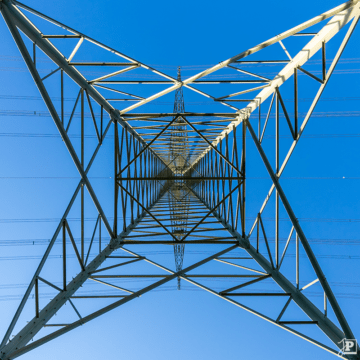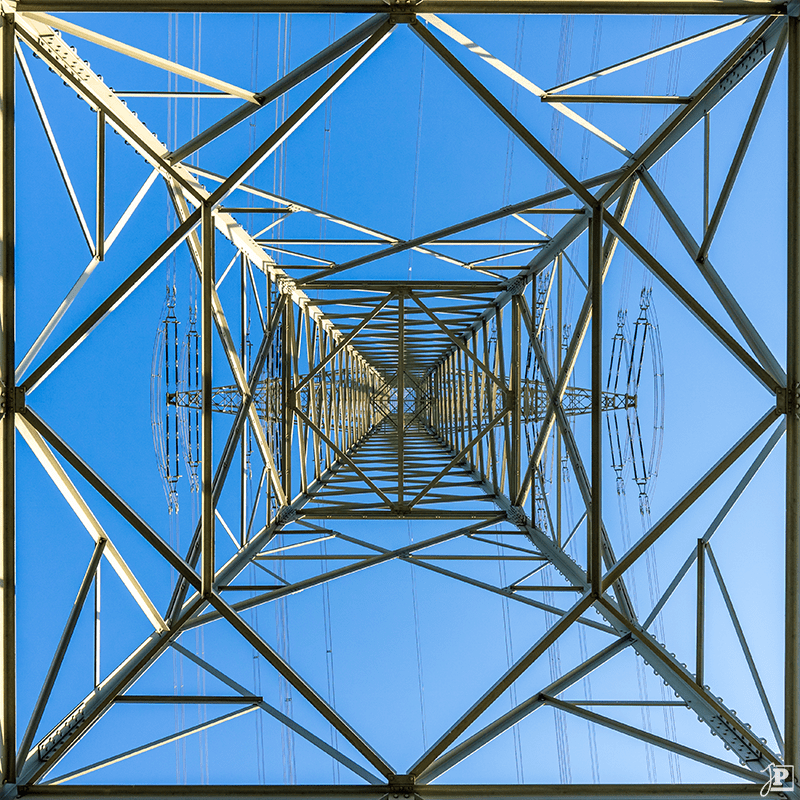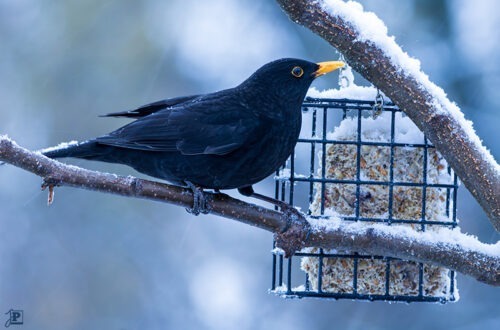Symmetry
How often have I been annoyed by a power transmission tower spoiling the scene when taking landscape photos? So why not turn the tables and make the tower itself the subject? The reward is unexpected symmetry.
Transmission Towers

They come in all shapes and sizes, and there’s hardly a place where you won’t see one. Of course, the electricity we need for more and more things – cell phones, electric cars, etc. – has to get to us somehow, and over long distances there is no other option than overhead power lines.
The appearance of pylons is increased even more by the fact that there are two separate high-voltage grids in Germany: One is the so-called industrial current, i.e., three-phase current (three lines per circuit) with a frequency of 50 Hz, which is ultimately also used to supply all households. Voltages of up to 380 kV are used for transmission, which is reflected in the size of the transmission towers and the length of the insulators.
The second high-voltage network is for railway current, which is used to feed the railroad overhead lines. This is transmitted as single-phase alternating current (two lines per circuit) with a frequency of 16.7 Hz and a voltage of 110 kV; accordingly, the masts are comparatively smaller.
Ultimately, the construction and use of such overhead line pylons is a science in itself; if you want to know more about it, you can start reading about it on Wikipedia. But what do you do with them as a photographer?
Symmetry

As written elsewhere here, a change of perspective often brings out unexpected results. It’s no different with transmission towers.
Since most pylons are located in open fields and must also be accessible for maintenance work, they are usually easy to reach by foot. For some, the area between the mast bases is overgrown with shrubs and trees, but for most it is no problem to stand underneath.
And this is where the variety of different types of construction reveals itself, depending on the voltage and number of lines. It also makes a difference whether it is a corner tower, or whether the lines run straight across the pole.
By the way, it is actually not that easy to find the exact center looking straight up, even though the many struts and their intersections provide good guide points.
To capture as much of the mast as possible, an ultra-wide-angle lens is definitely recommended, in my case the Tokina 11-20 mm. Of course, you can also get the upper part of the mast closer with longer focal lengths. In any case, you should not crop the image too close, so that you still have room to correct lens distortions and perspective in post-processing.
With these images, a square crop is the obvious choice. Using the appropriate tools in Adobe Lightroom Classic (or another image editing program of your choice), you can then align the struts exactly straight and parallel to the edges of the image.
The result
This corner pole of a 380 kV line can be found in a field at the edge of our town. We pass it almost every time we walk our dog – and that gave me the idea to take a closer look.

If I ever make a square calendar, this image will definitely be one of them.





